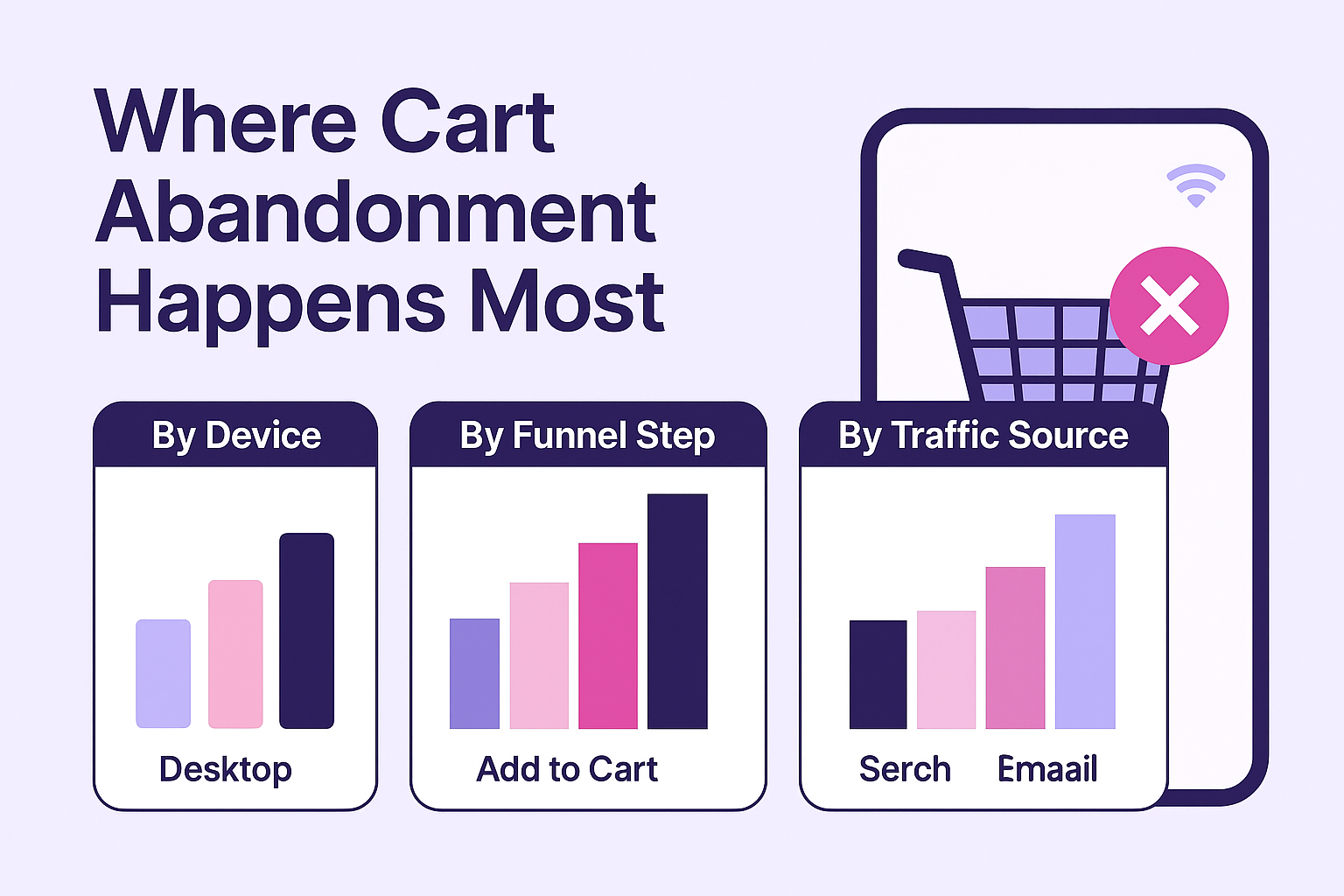Shoppers abandon their carts for many reasons, but knowing exactly where they drop off helps you fix what matters most. In this article, we’ll break down abandonment trends by device type, traffic source, and funnel step, so you can reduce funnel drop-off and turn browsers into buyers.
Where Cart Abandonment Peaks
In e-commerce, a "funnel" represents the sequence of steps a shopper takes on their way to making a purchase, from browsing products to completing a transaction. Each stage in the funnel is an opportunity to either move forward or drop off. Funnel drop-off is when users exit the site during one of these key stages, before completing their purchase. Identifying where and why this happens helps businesses pinpoint friction points and improve conversions.
1. By Funnel Step
Understanding the customer journey is crucial to pinpoint where abandonment occurs. While every step matters, some stages are significantly more prone to drop-offs.
The payment stage is the most critical point in the funnel. It’s where intent collides with hesitation. Long or confusing forms, missing trust signals, or a lack of preferred payment methods can easily derail conversions. Streamlining this step is one of the most impactful optimizations you can make.
2. By Device Type
Not all users experience your site the same way. Device type plays a massive role in shaping how users interact with your store and whether they complete a purchase.
- Mobile: 85% abandonment rate
- Desktop: 68% abandonment rate
- Tablet: 75% abandonment rate
Mobile shoppers dominate traffic, but they also face more friction. Smaller screens, less accurate inputs, and slower loading times often combine to push users away. This makes mobile UX design one of the top priorities for reducing abandonment. Responsive design, sticky CTAs, quick payment options, and lightning-fast load times all matter.
3. By Traffic Source
Traffic source reveals how primed a visitor is to buy. The further a user is in their intent journey, the less likely they are to abandon.
Email and organic traffic consistently perform better because users arrive with a purpose. In contrast, users from social media or display ads may be curious but uncommitted. Tailor your landing pages and retargeting strategy according to each source’s behavior to minimize drop-off.
How to Act on This Data
Improving funnel performance isn’t just about fixing obvious bugs—it’s about anticipating where users might hesitate or lose trust, and proactively smoothing those steps. Here’s how to use the insights above:
Once you know where abandonment happens, the next step is to act on those insights:
- Optimize the payment step with one-click options and fewer form fields.
- Prioritize mobile UX with responsive design, autofill, and intuitive navigation.
- Match content to traffic source so expectations align with your landing page.
- Monitor device analytics regularly to catch drop-offs early.
- A/B test funnel changes and iterate based on performance data.
Small wins at high-drop-off points can lead to big gains in revenue.






